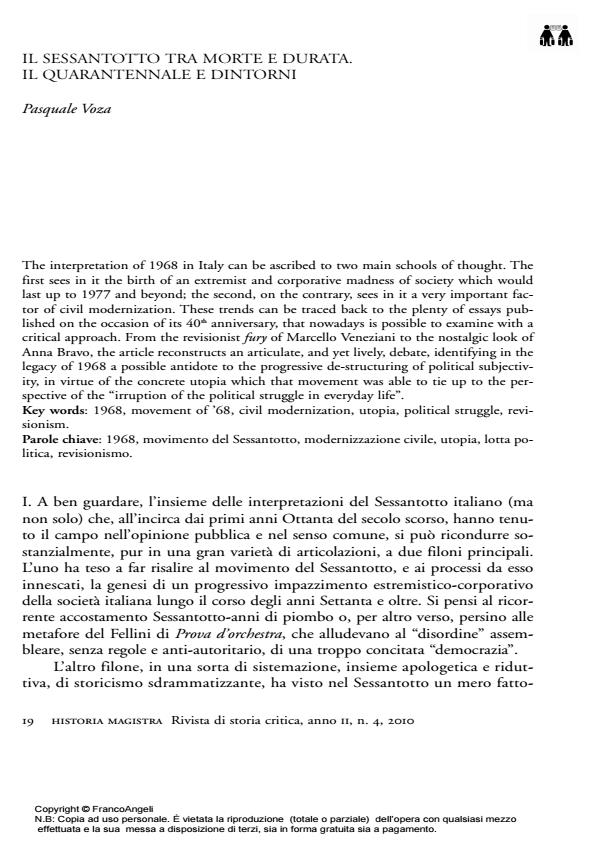Il sessantotto tra morte e durata. Il quarantennale e dintorni
Titolo Rivista HISTORIA MAGISTRA
Autori/Curatori Pasquale Voza
Anno di pubblicazione 2010 Fascicolo 2010/4
Lingua Italiano Numero pagine 11 P. 19-29 Dimensione file 318 KB
DOI 10.3280/HM2010-004004
Il DOI è il codice a barre della proprietà intellettuale: per saperne di più
clicca qui
Qui sotto puoi vedere in anteprima la prima pagina di questo articolo.
Se questo articolo ti interessa, lo puoi acquistare (e scaricare in formato pdf) seguendo le facili indicazioni per acquistare il download credit. Acquista Download Credits per scaricare questo Articolo in formato PDF

FrancoAngeli è membro della Publishers International Linking Association, Inc (PILA)associazione indipendente e non profit per facilitare (attraverso i servizi tecnologici implementati da CrossRef.org) l’accesso degli studiosi ai contenuti digitali nelle pubblicazioni professionali e scientifiche
The interpretation of 1968 in Italy can be ascribed to two main schools of thought. The first sees in it the birth of an extremist and corporative madness of society which would last up to 1977 and beyond; the second, on the contrary, sees in it a very important factor of civil modernization. These trends can be traced back to the plenty of essays published on the occasion of its 40th anniversary, that nowadays is possible to examine with a critical approach. From the revisionist fury of Marcello Veneziani to the nostalgic look of Anna Bravo, the article reconstructs an articulate, and yet lively, debate, identifying in the legacy of 1968 a possible antidote to the progressive de-structuring of political subjectivity, in virtue of the concrete utopia which that movement was able to tie up to the perspective of the "irruption of the political struggle in everyday life".
Parole chiave:1968, movimento del Sessantotto, modernizzazione civile, utopia, lotta politica, revisionismo
Pasquale Voza, Il sessantotto tra morte e durata. Il quarantennale e dintorni in "HISTORIA MAGISTRA" 4/2010, pp 19-29, DOI: 10.3280/HM2010-004004